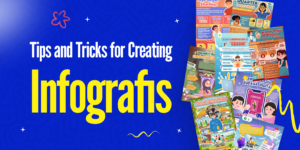Graphic Design Portfolio Ideas — A strong graphic design portfolio is your digital business card, showcasing your skills and abilities to potential clients and employers. It’s more than just a collection of your work; it’s a curated representation of your design aesthetic and problem-solving skills. Let’s dive into 30 creative ideas to inspire your own portfolio and provide practical tips on how to build one that stands out.
30 Creative Portfolio Ideas
- Minimalist Mastery: Showcase your design skills with a clean, minimalist layout and high-quality images.
- Storytelling Through Design: Create a narrative arc for your portfolio, guiding viewers through a journey of your work.
- Interactive Elements: Incorporate interactive elements like animations, hover effects, or even micro-animations to engage your audience.
- Themed Portfolio: Organize your work around a specific theme or style to create a cohesive and memorable impression.
- Case Study Showcase: Present your projects as detailed case studies, explaining the design process and the results.
- Typography-Focused Portfolio: Highlight your typography skills by creating a portfolio that is visually driven by typography.
- Color Palette Exploration: Experiment with different color palettes to create a visually stunning and cohesive portfolio.
- Animated Portfolio: Create a dynamic and engaging portfolio using animation techniques.
- Grid-Based Layout: Use a grid system to create a visually organized and balanced portfolio.
- Modular Design: Create a flexible portfolio layout that can be easily adapted to different screen sizes.
- Behind-the-Scenes: Give viewers a glimpse into your design process by sharing sketches, mood boards, and other behind-the-scenes materials.
- Personal Branding: Use your portfolio to showcase your personal brand and unique style.
- Collaborative Projects: Highlight projects you’ve worked on with other designers or creatives.
- Experimental Work: Showcase your willingness to take risks and explore new ideas.
- Client Testimonials: Include testimonials from satisfied clients to build credibility.
- Before and After Comparisons: Demonstrate the impact of your design work by showing before and after images.
- Interactive Resume: Combine your resume with your portfolio for a more engaging experience.
- Time-Based Projects: Showcase your ability to meet deadlines by highlighting time-sensitive projects.
- Sustainable Design: Demonstrate your commitment to sustainable design practices.
- Inclusive Design: Showcase your understanding of inclusive design principles.
- AR/VR Experience: Create an immersive experience for viewers using augmented or virtual reality.
- Gamified Portfolio: Make your portfolio fun and interactive by adding game elements.
- Data Visualization: Showcase your ability to communicate complex data through visual design.
- Motion Graphics: Create a dynamic portfolio using motion graphics and animation.
- Microsite: Create a dedicated microsite for your portfolio.
- Social Media Integration: Integrate your social media profiles into your portfolio.
- Print-Ready Portfolio: Create a physical portfolio for in-person presentations.
- Custom Domain: Use a custom domain name to make your portfolio more professional.
- Accessibility: Ensure your portfolio is accessible to people with disabilities.
- Regular Updates: Keep your portfolio up-to-date with your latest work.
Tips for Building Your Portfolio
- Choose your best work: Only include your strongest pieces.
- Tell a story: Create a narrative that connects your projects.
- Use high-quality images: Invest in professional photography or use high-resolution mockups.
- Keep it simple: Avoid clutter and focus on your work.
- Make it responsive: Ensure your portfolio looks great on all devices.
- Use a clear call-to-action: Tell visitors what you want them to do next.
- Get feedback: Ask for feedback from other designers and potential clients.
Conclusion
Your graphic design portfolio is your most important marketing tool. By carefully curating your work and presenting it in a visually compelling way, you can attract potential clients and land your dream job.
Need high-quality images and graphics for your portfolio? Explore StocksVector’s vast collection of royalty-free assets.
Read More:







